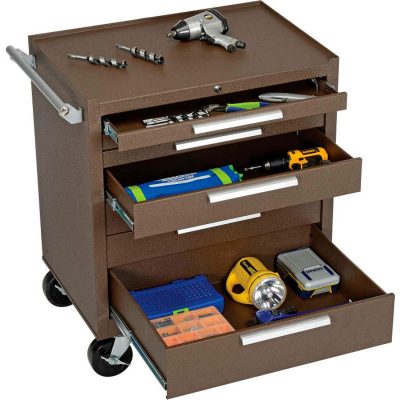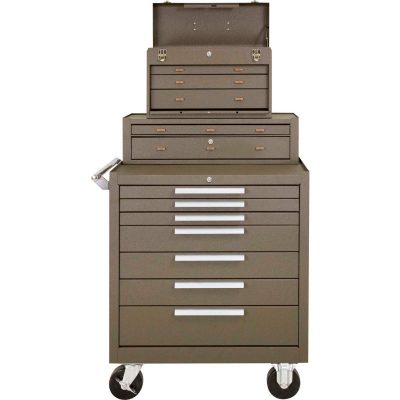Setting up a professional workspace with tool trolleys involves careful planning and organization to create an efficient and productive environment. Here’s a step-by-step guide to help you set up your workspace using tool trolleys:
- Assess Your Needs:
- Identify the types of projects you’ll be working on and the tools you’ll need. Make a list of tools and equipment you frequently use.
- Choose the Right Trolleys:
- Select tool trolleys that suit your workspace and storage needs. Consider the size, capacity, and features of the trolleys, as mentioned in the previous response.
- Design the Layout:
- Determine the layout of your workspace. Place the trolleys in a way that optimizes workflow and accessibility to tools.
- Zoning:
- Divide your workspace into zones based on the nature of your tasks. For example, have a woodworking zone, a metalworking zone, an electronics zone, etc. Assign specific trolleys for each zone to keep related tools together.
- Tool Placement:
- Organize tools within the trolleys based on frequency of use. Keep frequently used tools at the top or in easily accessible drawers, while storing less-used tools lower down.
- Drawer and Compartment Organization:
- Use dividers, trays, and foam inserts to create compartments within the trolley drawers. This keeps tools neatly separated and prevents them from shifting during movement.
- Labeling:
- Label drawers, shelves, and compartments to quickly identify where each tool belongs. This helps maintain order and makes it easier to find tools.
- Safety and Security:
- If your trolleys have locking mechanisms, use them to secure your tools when not in use. This prevents unauthorized access and protects valuable tools.
- Accessory Storage:
- Utilize hooks, holders, and magnetic strips on the sides of the trolleys to store frequently used small tools like wrenches, screwdrivers, and pliers.
- Power and Lighting:
- Consider placing your trolleys near power outlets for easy access to electrical tools. Adequate lighting in your workspace is also important for visibility and safety.
- Workflow Efficiency:
- Arrange trolleys in a way that minimizes unnecessary movement. Tools you often use together should be stored close to each other.
- Maintenance and Cleaning:
- Regularly clean your trolleys and tools to prevent dust buildup. Empty and organize your trolleys after each project to maintain order.
- Adaptability:
- Design your setup with adaptability in mind. As your tool collection or project types evolve, be prepared to reorganize your trolleys to accommodate changes.
- Personalization:
- Make the space your own by adding personal touches, such as motivational posters or a comfortable chair.
- Safety Measures:
- Ensure your workspace follows safety guidelines. Have fire extinguishers, first aid kits, and proper ventilation in place.
- Regular Review:
- Periodically assess the efficiency of your workspace. If you notice any bottlenecks or areas that can be improved, adjust your setup accordingly.
Remember, the goal is to create a workspace that enhances your productivity and creativity while keeping your tools organized and easily accessible. Customizing your setup to your specific needs will make your work more enjoyable and efficient.



















